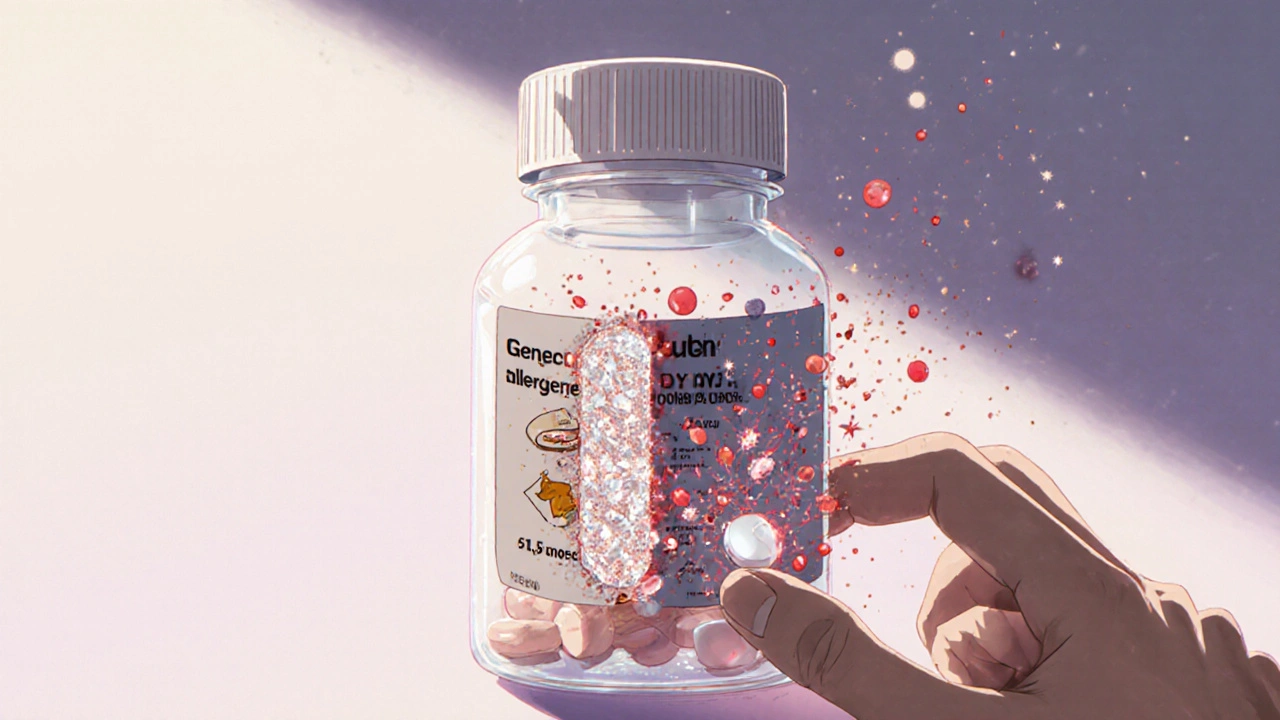Inactive Ingredients: What’s Really in Your Pills and Why It Matters
When you swallow a pill, the active drug is only part of the story. The rest? That’s inactive ingredients, substances added to medicines that don’t treat your condition but help the pill work, stay stable, or be easier to swallow. Also known as excipients, these include things like starch, lactose, dyes, and preservatives—components you never see on the label but that can change how your body reacts. Most people assume all pills with the same active drug are the same. But that’s not true. Two versions of the same medication can have wildly different inactive ingredients, and that’s where problems start.
Take lactose, a common filler in pills and capsules. It’s fine for most people, but if you’re lactose intolerant, even a tiny amount can cause bloating, cramps, or diarrhea. That’s not a side effect of the drug—it’s the filler. Same with dyes, like FD&C Red No. 40 or tartrazine. Some people report headaches, rashes, or even asthma flare-ups after taking pills with artificial coloring. And then there’s cornstarch, often used as a binder, which can be a problem for those with gluten sensitivity if it’s not properly processed. These aren’t rare issues—they show up again and again in patient reports, especially when switching from brand to generic.
Why does this happen? Because manufacturers aren’t required to prove inactive ingredients are harmless for every person—just that the active drug works. So a generic version of your blood pressure pill might use a different binder than the brand name, and suddenly you feel off. Not because the medicine failed, but because your body reacted to something new in the pill. That’s why some people swear their brand-name drug works better—it’s not placebo. It’s the filler.
Here’s the thing: you don’t have to guess. Every pill’s inactive ingredients are listed on the package insert or available through your pharmacist. If you’ve ever had unexplained symptoms after switching meds, check the list. Look for things like gluten, dairy, soy, artificial colors, or alcohol. If you’re allergic to any of those, ask for a version without them. Some pharmacies even carry specialty formulations made for sensitive patients.
Below, you’ll find real stories and guides from people who’ve dealt with these hidden triggers—how they figured out their reaction wasn’t to the drug, but to the filler. You’ll learn how to ask the right questions, how to spot risky ingredients, and how to find safer alternatives without paying a fortune. This isn’t about fear. It’s about control. Your medicine should work for you—not against you.

